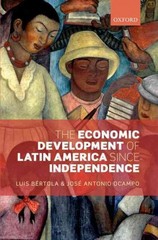Question
6>>Lower interest rates are likely to Select one: a.Decrease consumption. b.Increase borrowing and spending. c.Increase cost of borrowing. d.Encourage saving. 7>>Assume that the multiplier in
6>>Lower interest rates are likely to
Select one:
a.Decrease consumption.
b.Increase borrowing and spending.
c.Increase cost of borrowing.
d.Encourage saving.
7>>Assume that the multiplier in an economy is 9 and a firm invests $250 million dollars in the economy. How much spending will approximately take place cumulatively at the fifth round?
8>>In explaining the level of unemployment, Keynes emphasized:
Select one:
a.Changes in technology.
b.Aggregate demand.
c.Lending by financial institutions
d.inflationary expectations.
9>>Which of the following would not cause a shift in the aggregate demand curve?
Select one:
a.A reduction income tax
b.An increase in government spending
c.A reduction in interest rates
d.A fall in the cost of production
10>>Macroeconomic theory that emphasized the theories of Keynes and de-emphasized the Classical theory developed because of:
Select one:
a.The belief that the market could adjusting to fix itself when necessary
b.Failure of the Classical model to explain the prolonged existence of high unemployment and inflation during the Great Depression
c.Unemployment could not persist because wages would fall to eliminate excess supply of labour
d.Keynes' belief that the market could reduce unemployment and create economic growth during the Great Depression
11>.The aggregate demand curve is downward sloping because
Select one:
a.a lower price level, holding the nominal quantity of money constant, leads to a larger quantity of money in real terms, causes the interest rate to fall, and stimulates planned investment spending.
b.a lower price level, holding the nominal quantity of money constant, leads to a larger quantity of money in nominal terms, causes the interest rate to rise, and stimulates planned investment spending.
c.a higher price level, holding the nominal quantity of money constant, leads to a larger quantity of money in real terms, causes the interest rate to fall, and stimulates planned investment spending.
d.a higher price level, holding the nominal quantity of money constant, leads to a smaller quantity of money in real terms, causes the interest rate to fall, and stimulates planned investment spending.
Step by Step Solution
There are 3 Steps involved in it
Step: 1

Get Instant Access to Expert-Tailored Solutions
See step-by-step solutions with expert insights and AI powered tools for academic success
Step: 2

Step: 3

Ace Your Homework with AI
Get the answers you need in no time with our AI-driven, step-by-step assistance
Get Started


